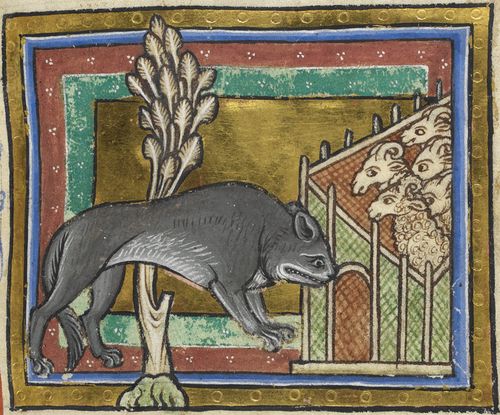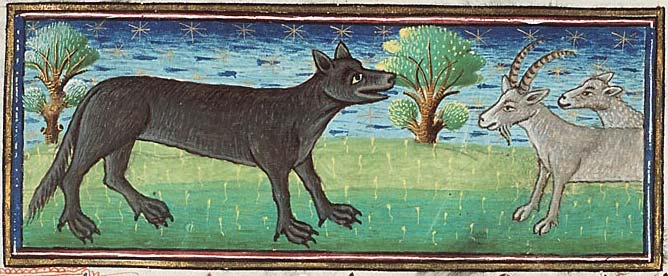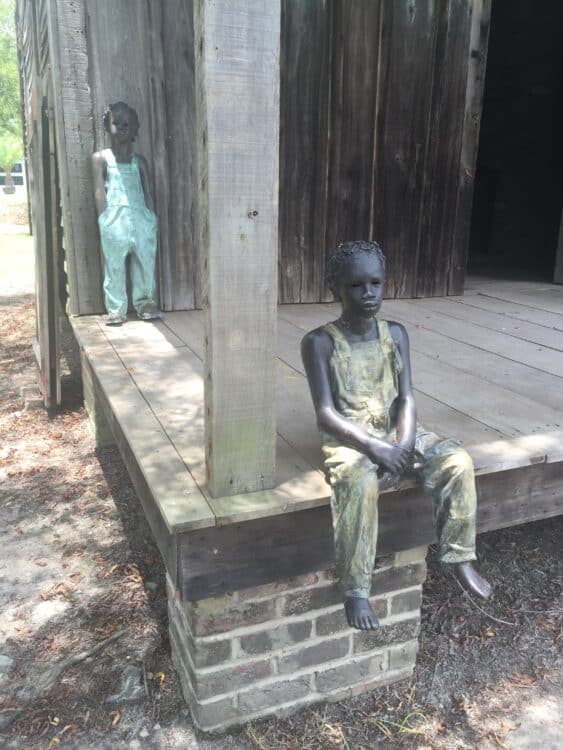Celtic Magic
24 Apr 2019|Mark Williams
- Research

I came to Teddy Hall in January 2019 as Fellow and Tutor in Old and Middle English, but my own research focuses on literature in the Celtic languages, Irish and Welsh. I’m currently working on a book on magic in those literatures, and this blogpost gives me the opportunity to tell you a bit about what I am investigating.
How did people in the Middle Ages think about magic? Most people believed in it. There was ‘natural’ magic, which means the use of the occult properties of stones, herbs, and the heavenly bodies. This kind of magic was basically allowed. On the other hand, there was learned book-magic, which was potentially illicit because it involved trafficking with spirits, which might be demonic.
Now to the Celtic world. The most magical tales in Welsh are the exquisite Four Branches of the Mabinogi, composed around 1100. In the last of the Four Branches we are introduced to the master-enchanter Gwydion, his brother Gilfaethwy, and their uncle Math, an even greater magician. Gwydion can manipulate appearances, conjuring up a fleet of ships and fashioning shields out of toadstools.
But at a pivotal moment Gwydion finds himself on the receiving end of a more powerful enchantment – possibly the most perverse incident in all medieval literature. Gwydion helps his younger brother Gilfaethwy to rape the woman Goewin, bed-partner of their uncle Math; Math magically punishes the brothers, turning them into pairs of male and female animals. For three years, the brothers roam the forest as a pair of wolves, then a pair of deer, then a pair of wild pigs. The brothers mate with one another, and Gilfaethwy, the rapist, has to be female twice.
All this is lurid indeed, and of course it is appropriate: in a sense it forces the brothers to violate the levitical taboos against incest, sodomy, and bestiality simultaneously. But what I’m interested in is the nature of the transformation. Math tells Gwydion and Gilfaethwy what he is about to do:
“Since you are bound together, I will make you journey together, and you will mate with one another, and be of the same nature (anian) with the wild animals in whose form (rhith) you are.”

So there are two native words here, rhith: ‘outer shape/outer appearance’, and anian: ‘inner nature’, ‘essential being’, which comes from Latin ingenium, ‘inner essential quality’.
The view of the ontology of magical transformation here is peculiar. In most medieval accounts of shapeshifting the outer form can be changed by magic but not the inner essence. In a twelfth-century Latin account of the topography of Ireland, the Cambro-Norman cleric Gerald of Wales relates the story of a cleric who encounters a pair of wolves. They are a magically transformed human couple who long to receive the Eucharist:
“To remove all doubt the wolf pulled all the skin off the she-wolf from the head down to the navel, folding it back with his paw as if it were a hand. And immediately the shape of an old woman, clear to be seen, appeared.”
Gerald’s wolves are only transformed on the outside. Not so in the Welsh tale, and the author of the Four Branches ascribes a theologically problematic, even terrifying, level of power to a magician. The normal argument about the limits of magic was that an enchanter could change the outer form of an entity but not its essence. Only God could perform the reverse manoeuvre, and the theology of the Eucharist depended on precisely that distinction. To use the terminology of the theological intellectuals of the day, we’re talking here about ‘substance’ and ‘accidents’: the accidents of the Eucharistic bread and wine – their superficial sensory qualities – remain the same at the moment of consecration, while their substance is transformed by God into the literal flesh and blood of Christ. This remains the standard Catholic theology of the Eucharist.
But the wizard Math seems to be able to change both accidents and substance, and in this sordid story our unknown early twelfth-century Welsh author felt able to ascribe to an enchanter a level of power rivalled only by God himself. In this he managed to anticipate the terms of debate which would occupy Christian thinkers over the following decades. Partly as a result of the upsurge of interest in Ovid’s Metamophoses, issues of transmogrification became hot topics in the thirteenth century. If entities can be transformed, where does that leave the sovereignty of God? What limits, if any, does God place upon the activities of demons?
My point is that we have a writer of genius, on the margins of the medieval insular world, who had thought precociously about these issues, and who expected his noble audience to think precociously hard in turn. The Four Branches are among the most familiar texts to Celtic specialists, but astonishingly there is no published research on the tales’ sumptuous and eerie magic: if these were English or French texts, magic would be central to scholarly discussion. What is needed is an intervention that puts Celtic magic in its European context – and this is precisely what my research is designed to do.
Read more on our blog
Category: Research
Author

Mark
Williams
Professor Mark Williams is a Fellow and Tutor in English Language and Literature. He specialises in medieval Irish saga, Irish mythology, the intellectual and cultural relationship between the Celtic-speaking countries and the wider medieval world, magic and the supernatural in Welsh and Irish literature, and ecocriticism.

